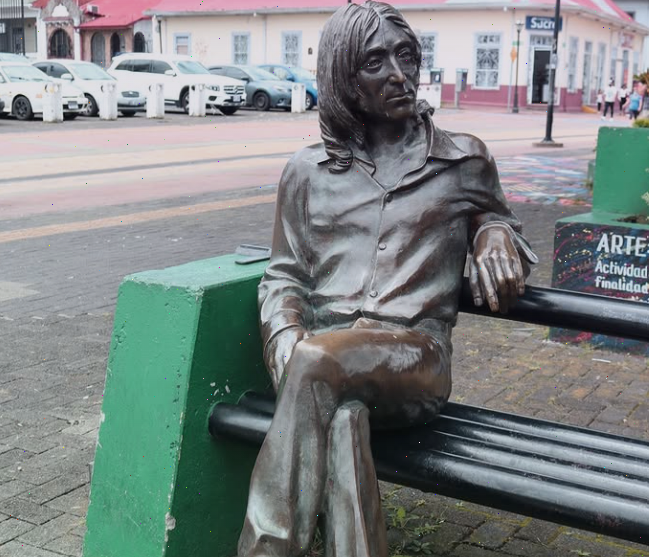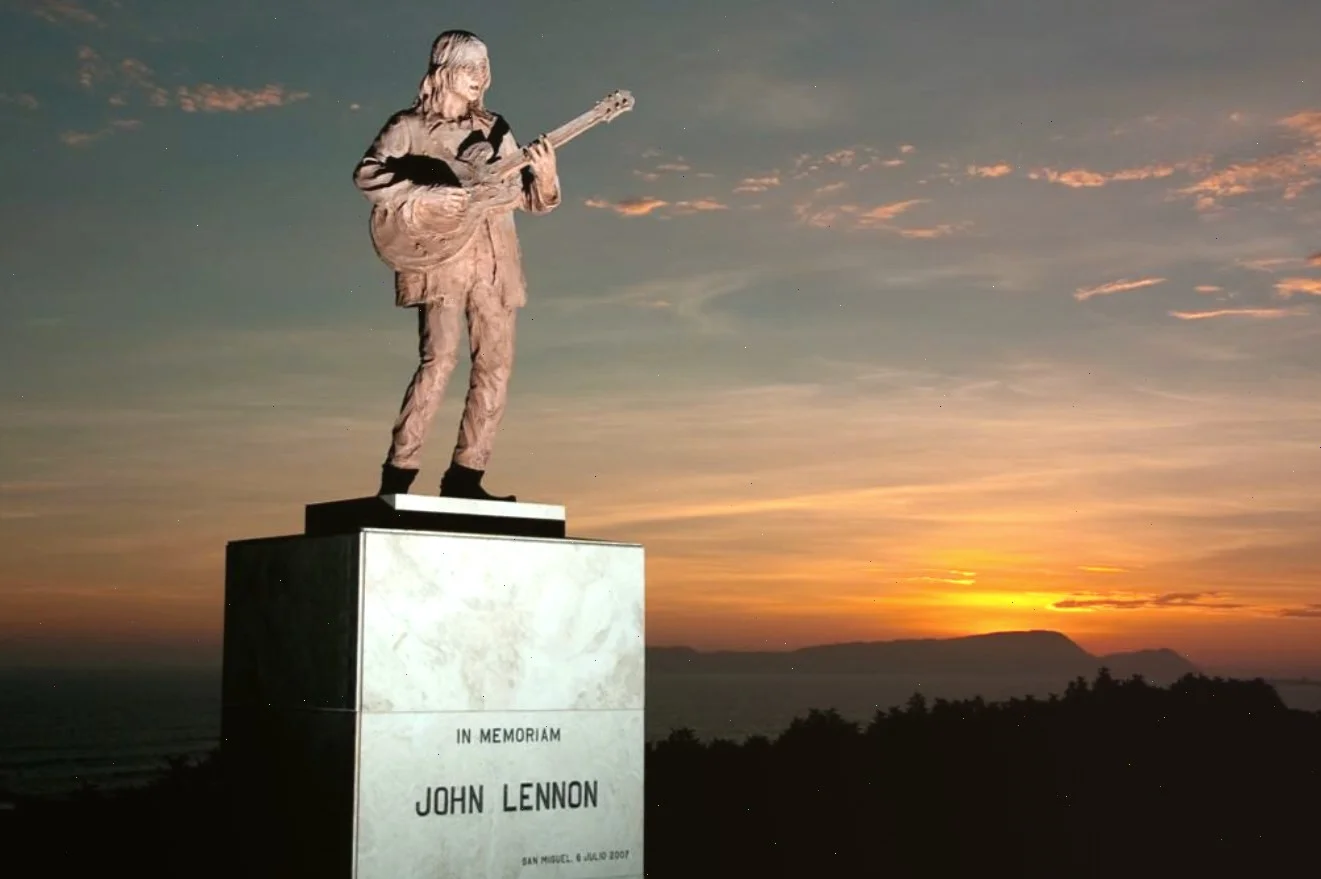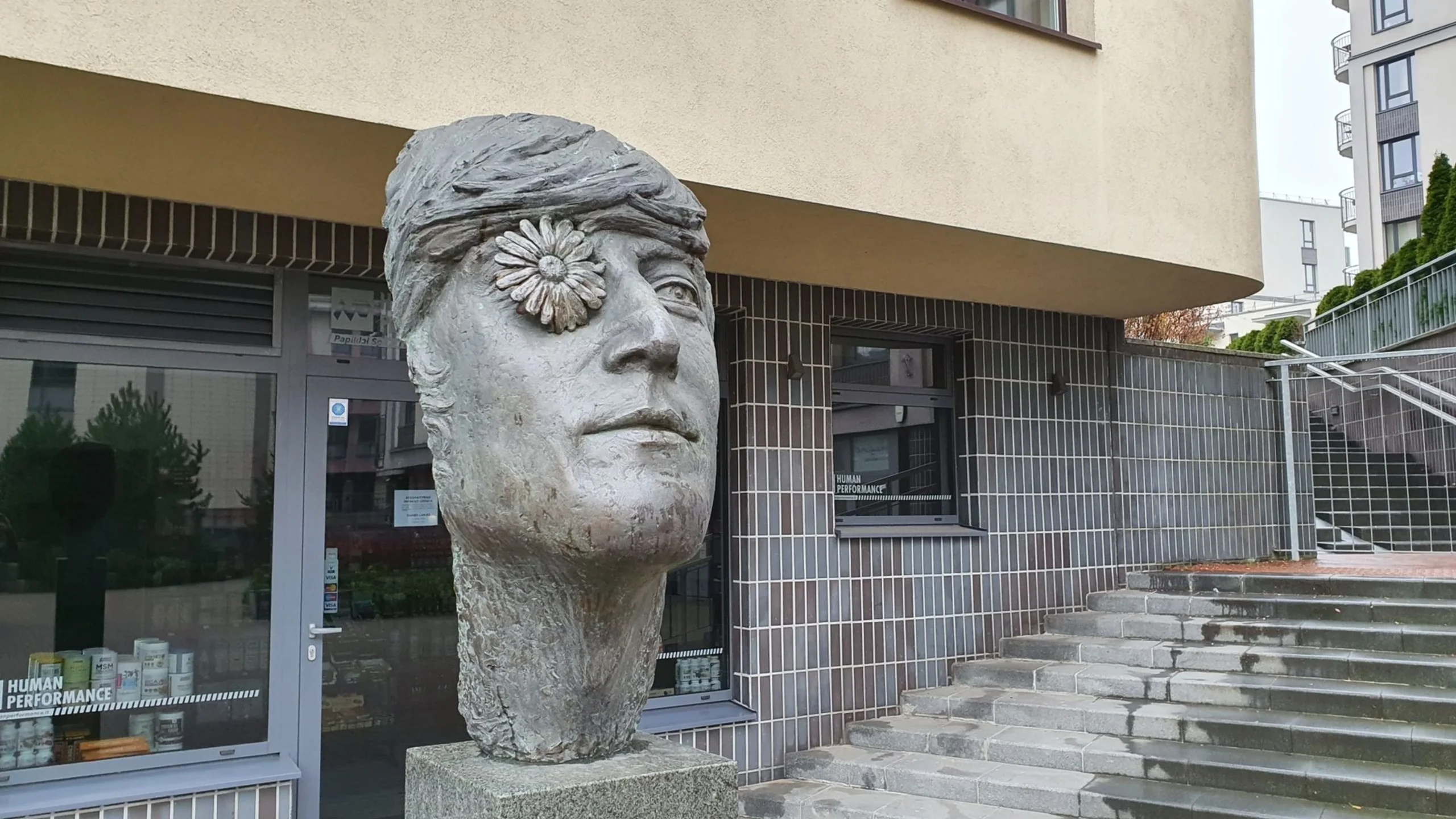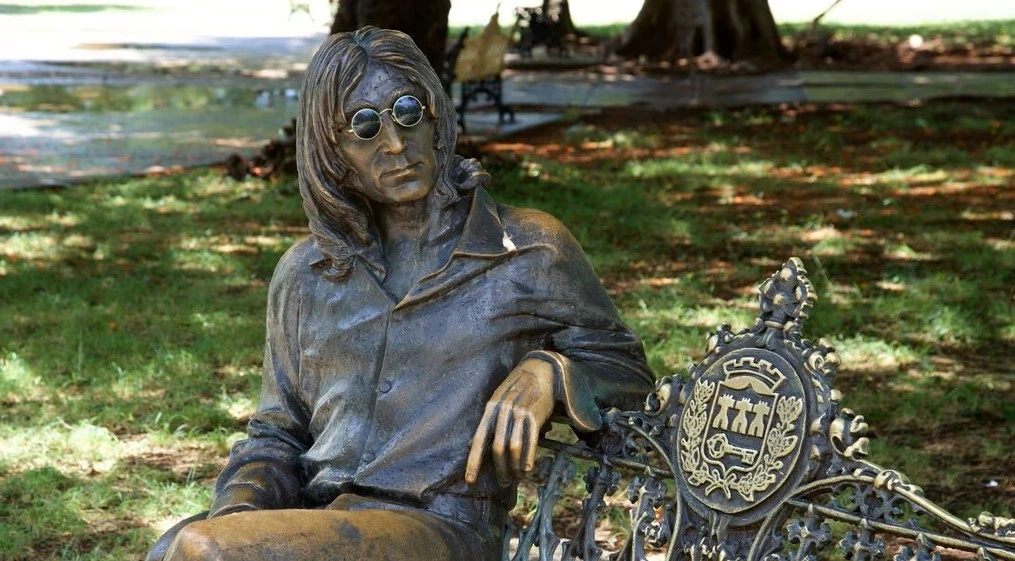
A life‑size bronze sculpture of John Lennon sits quietly on a bench in the exact center of Plaza Artigas, downtown San José, Costa Rica. Installed in front of the Iglesia de la Soledad, the statue captures Lennon in a relaxed pose—legs crossed, hands resting casually on his lap—inviting passersby to pause, reflect, and even sit beside him for photographs. Placing a monument to one of the world’s most famous advocates for peace at the very site where Beatles records were once publicly burned makes this location uniquely powerful: it transforms a place of protest into a space of reconciliation and celebration.
History of the Statue
The John Lennon statue was unveiled on November 28, 2011, following a proposal made eighteen months earlier by Mauricio Vargas, a lifelong Beatles fan and local radio host. Costa Rica’s mayor at the time, Johnny Araya, championed the project as a way to enrich San José’s cultural life and attract visitors. Cuban sculptor José Ramón Villa created the work, titling it “Imagine all the people living life in peace.” Although some critics questioned why the city would honor a non-Costa Rican figure with a foreign artist’s work, the ceremony drew hundreds of residents and tourists, united by Lennon’s enduring message of love and understanding.
Detailed Description of the Statue
The sculpture depicts John Lennon seated on a standard park bench, rendered in bronze to withstand outdoor exposure. It stands approximately 1.7 meters tall and measures 2 meters in length, including the bench. Its realistic style captures fine details—from the folds of Lennon’s jacket to the contours of his iconic round glasses, which a nearby guard will place on the statue upon request (they are often removed by pranksters). Although there is no lengthy inscription, a small plaque at the base quotes the Spanish translation of Lennon’s famous lyric:
“Dirás que soy un soñador, pero no soy el único.”
This simple phrase reinforces the sculpture’s theme of shared hope and unity.
Location and Surroundings
Plaza Artigas lies at the intersection of Avenida Central and Calle 2, directly across from the historic Iglesia de la Soledad in San José’s Chinatown district. Originally selected for its historical resonance—this was where Costa Ricans once protested Lennon’s remark that The Beatles were “more popular than Jesus”—the plaza today is a lively pedestrian square. Surrounding the statue are food carts, street musicians, and outdoor seating for nearby cafés, creating a vibrant urban atmosphere that encourages both casual encounters and quiet reflection.
Cultural and Social Significance
- The statue has become a focal point for local cultural events, including annual Beatles tribute concerts and peace rallies held each December 8 (the anniversary of Lennon’s death).
- It attracts thousands of tourists every year, who come not only for selfies but also to learn about Costa Rica’s history of free expression and protest.
- Local schools organize walking tours to Plaza Artigas to discuss the transformation of public opinion—from burning Beatles records to honoring Lennon’s legacy of peace.
Interesting Facts
- When first unveiled, the statue cost roughly ₡7 million (about US$14,000).
- The site of the monument is the same place where Beatles records were publicly burned in 1966 after Lennon’s controversial comment.
- A security guard stationed nearby will place Lennon’s trademark glasses on the statue if visitors ask him politely.
- Beatles cover bands often perform impromptu concerts around the bench, drawing crowds that sometimes include Lennon look‑alikes.
How to Get There
- By bus: Take any downtown route to the “Soledad” stop on Avenida Central.
- By metrobus: Use Line 601 or 603 and alight at Iglesia de la Soledad station.
- On foot: Plaza Artigas is a 5-minute walk north from Parque Central (Central Park) and adjacent to San José’s Chinatown.
- Landmarks: Look for the distinctive white facade of Iglesia de la Soledad; the bench is directly in front of its main entrance.
The John Lennon statue at Plaza Artigas stands as a testament to the enduring power of peace, forgiveness, and cultural transformation. What once was a site of protest has become a gathering place where locals and visitors alike celebrate Lennon’s legacy of dreaming big and imagining a better world. A visit here offers more than a photo opportunity—it offers a moment of connection to a global message that remains as relevant today as ever.



